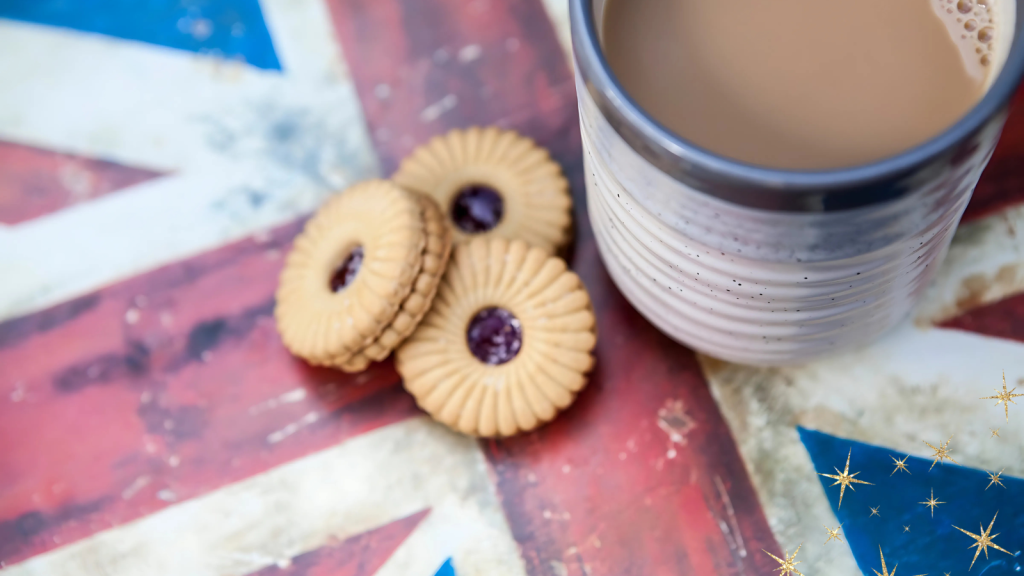Britain’s love affair with biscuits is as enduring as our fondness for a cuppa. These sweet (and sometimes savoury) treats have been a staple of our tea breaks for generations, but they often leave our friends across the pond scratching their heads. From the humble digestive to the fancy Jammie Dodger, our biscuit tin is a treasure trove of flavours and textures that might seem a bit odd to the uninitiated. Nostalgia plays a powerful role in our attachment to these teatime favourites, with many of us holding fond memories of dunking and munching our way through childhood. So, grab a brew and join us as we munch our way through 21 quintessentially British biscuits that have the rest of the world raising their eyebrows.
Digestive

The humble digestive is a British institution. Despite its rather unappetising name, this wheaty wonder is beloved for its simple, slightly sweet taste and satisfying crunch. Originally created in 1839 to aid digestion (hence the name), it’s now a staple in biscuit tins across the nation. The digestive’s versatility is unmatched – it’s equally at home dunked in tea, smothered in chocolate, or forming the base of a cheesecake.
Hobnob

The Hobnob is like the digestive’s rugged cousin. With its oaty texture and golden-syrup sweetness, it’s a biscuit that means business. Launched in 1985, the Hobnob quickly became a national favourite. Its robust nature makes it perfect for dunking in tea without fear of it disintegrating, earning it the nickname “one nobbly oat biscuit” among fans.
Jammie Dodger
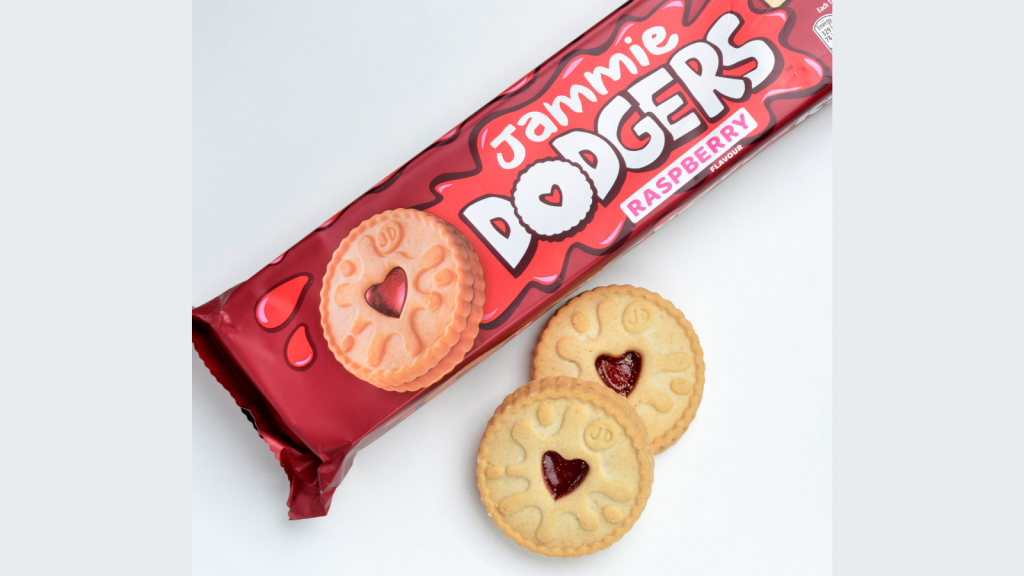
Named after a character in the Beano comic, the Jammie Dodger is a playground favourite that’s stood the test of time. This shortbread sandwich with a raspberry jam centre has been delighting British taste buds since 1960. The heart-shaped cutout on top, revealing a glimpse of the jammy filling, adds a touch of whimsy that’s hard to resist.
Custard Cream
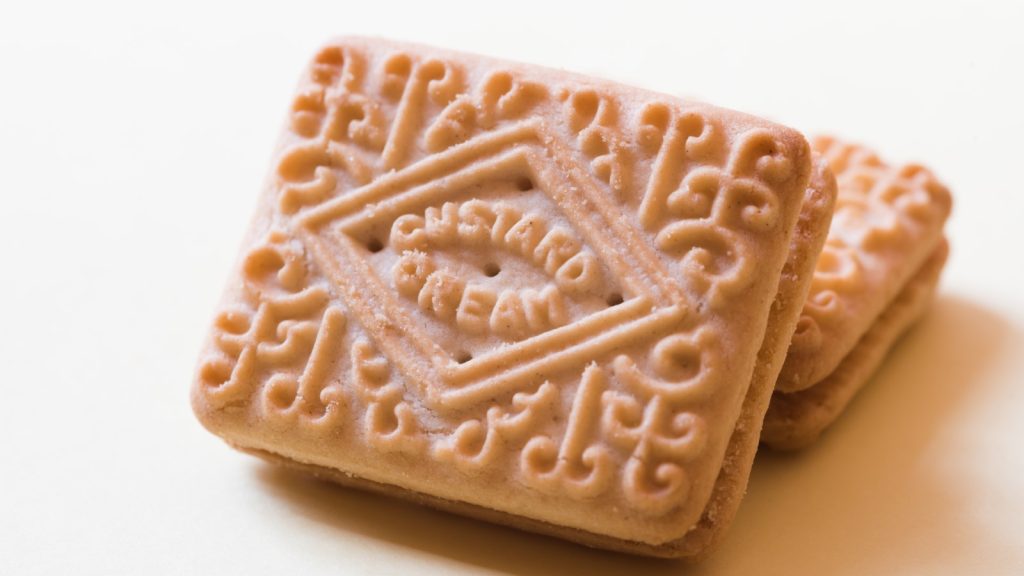
The custard cream is a biscuit that punches above its weight. This humble sandwich biscuit, with its creamy custard-flavoured filling, has been a staple of British tea breaks since the early 1900s. Its elaborate baroque-style design, featuring the letters ‘CC’, adds a touch of grandeur to an otherwise unassuming biscuit.
Bourbon
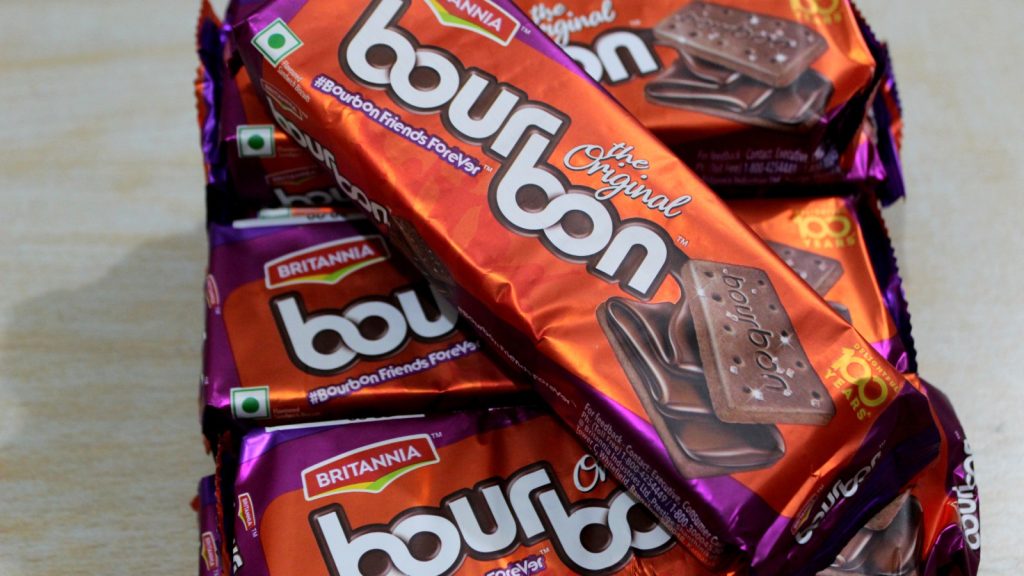
Don’t be fooled by the fancy French name – the Bourbon is as British as they come. This chocolate sandwich biscuit with a chocolate buttercream filling has been a teatime favourite since 1910. Despite its rich flavour, the Bourbon is surprisingly light, making it dangerously easy to munch through a whole packet without noticing.
Rich Tea
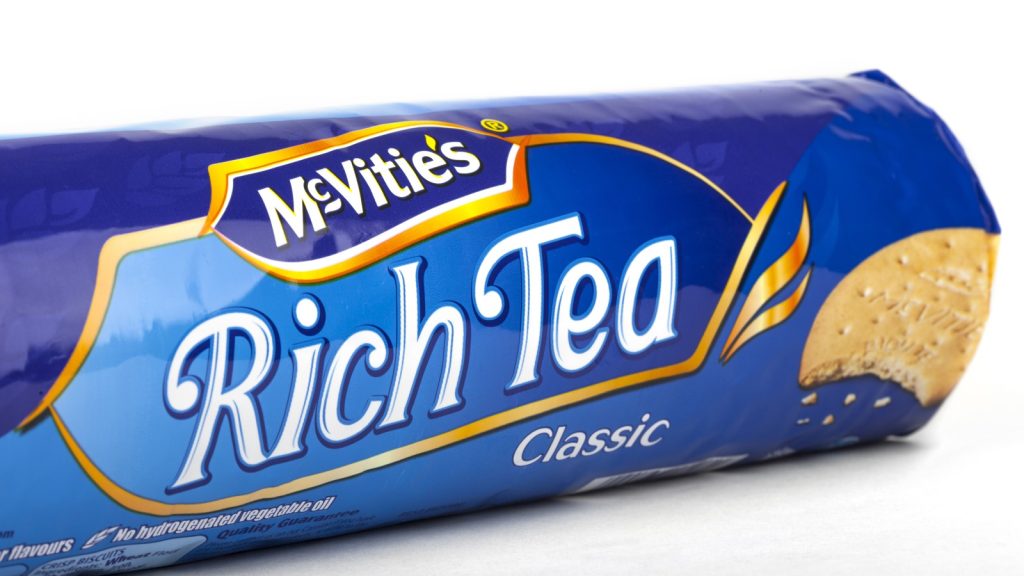
The Rich Tea is the unsung hero of the biscuit world. Its plain appearance belies its rich history – it was originally developed in the 17th century as a light snack for the upper classes. Today, it’s loved by Brits of all backgrounds for its subtle sweetness and satisfying snap. The Rich Tea’s true strength lies in its dunking ability, maintaining its integrity in hot tea far longer than one might expect.
Ginger Nut
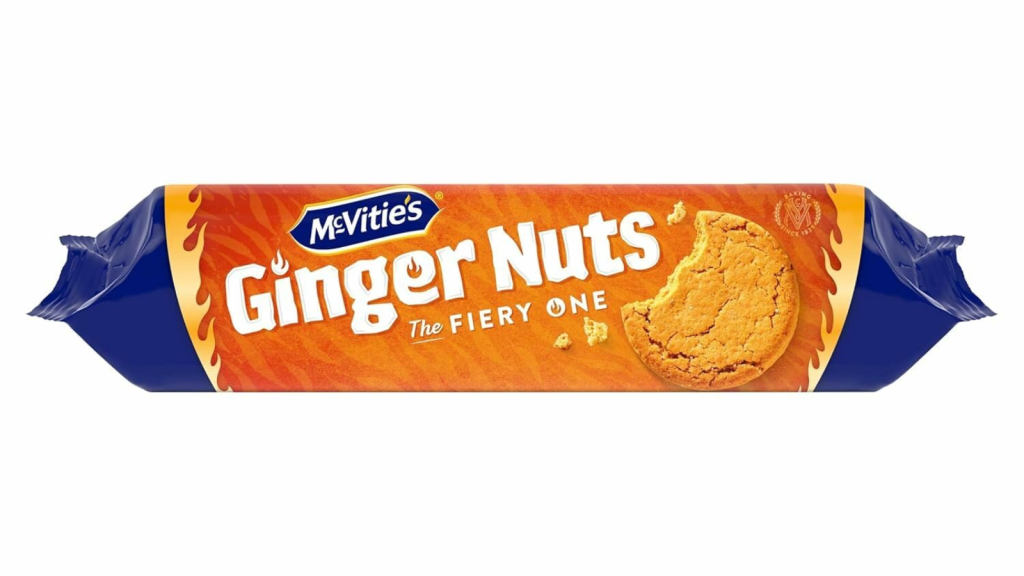
The Ginger Nut is not for the faint-hearted. This fiery biscuit packs a punch with its strong ginger flavour and rock-hard texture. Originally created in the 19th century, the Ginger Nut has long been appreciated for its supposed digestive benefits. Its sturdy nature makes it an excellent choice for dunking, softening just enough to be palatable without losing its shape.
Malted Milk
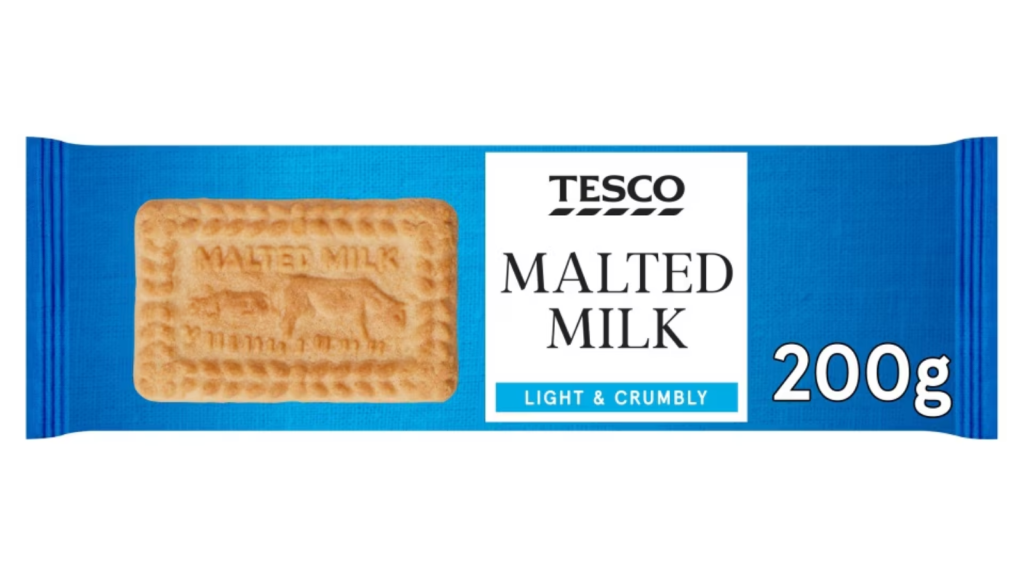
The Malted Milk biscuit is a nostalgic favourite that often leaves non-Brits puzzled. With its distinctive cow design and malty flavour, it’s a biscuit that harks back to simpler times. Created in the early 20th century, the Malted Milk was originally marketed as a nutritious snack due to its malted milk content.
Pink Wafer
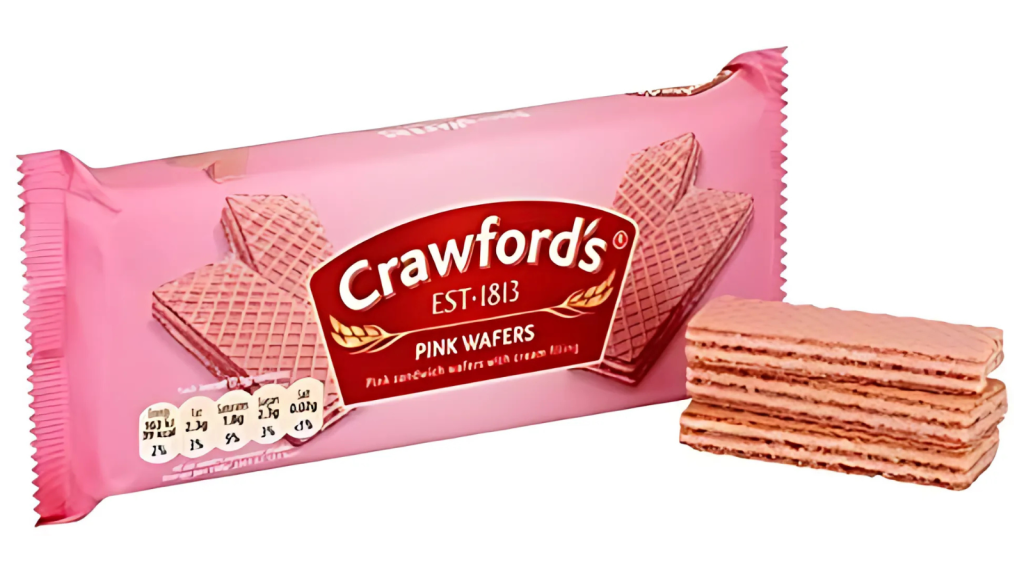
The Pink Wafer is the pop star of the biscuit world – flashy, sweet, and not taking itself too seriously. This brightly coloured biscuit consists of layers of wafer sandwiched together with a pink-coloured cream. Despite its somewhat artificial appearance, the Pink Wafer has been a beloved part of British teatime since the 1950s.
Garibaldi
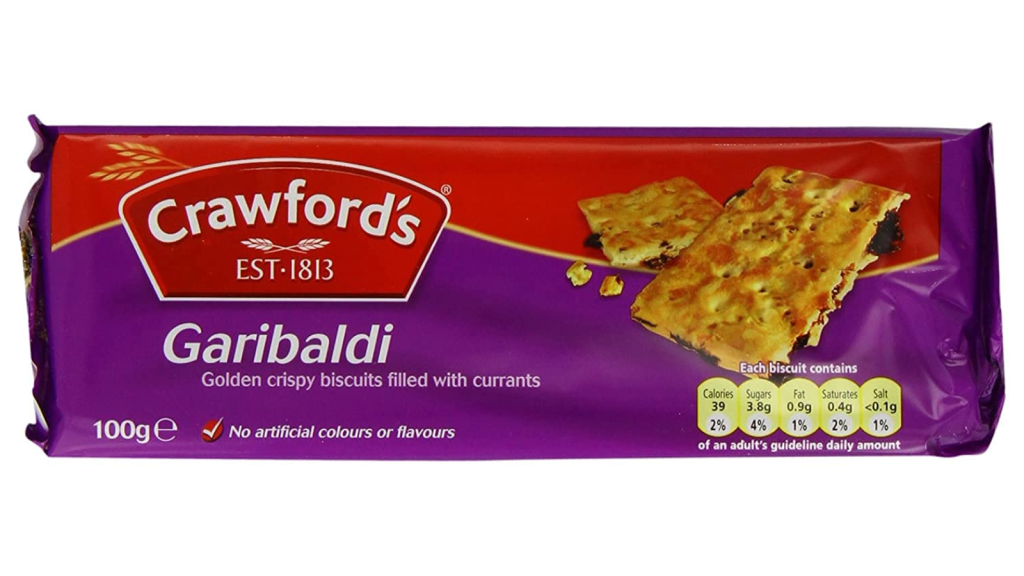
Named after an Italian general, the Garibaldi is affectionately known as the ‘squashed fly biscuit’ due to its appearance. This flat biscuit with currants squashed between two layers of dough has been a British favourite since 1861. Its unique texture and tangy-sweet taste make it a love-it-or-hate-it biscuit among Brits.
Nice
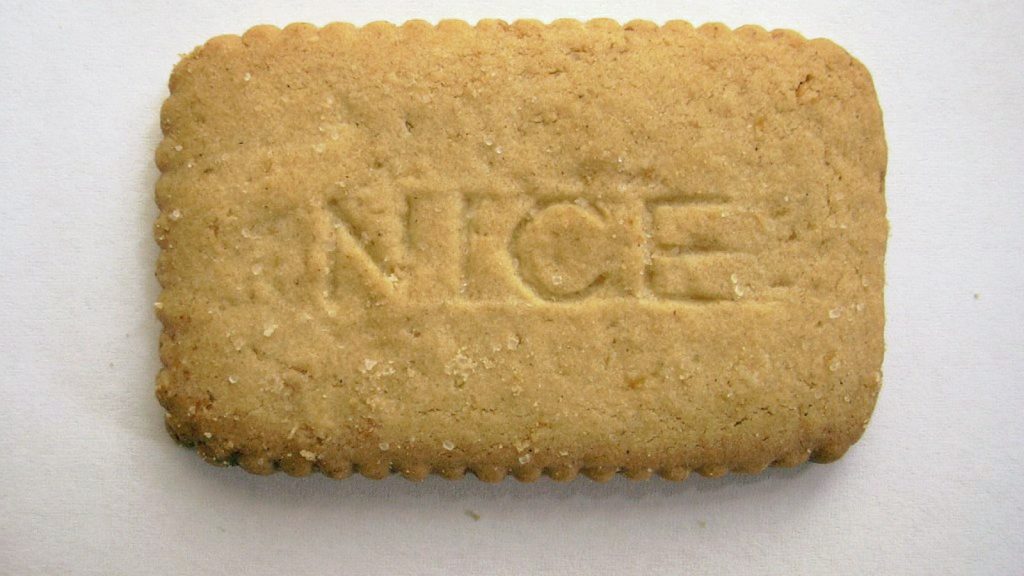
Despite its French-sounding name (which is actually pronounced like the English city ‘Niece’), the Nice biscuit is thoroughly British. This coconut-flavoured biscuit with its sugar-sprinkled top has been gracing British tea tables since the late 19th century. Its subtle sweetness and light texture make it a perfect accompaniment to a cup of tea.
Fruit Shortcake
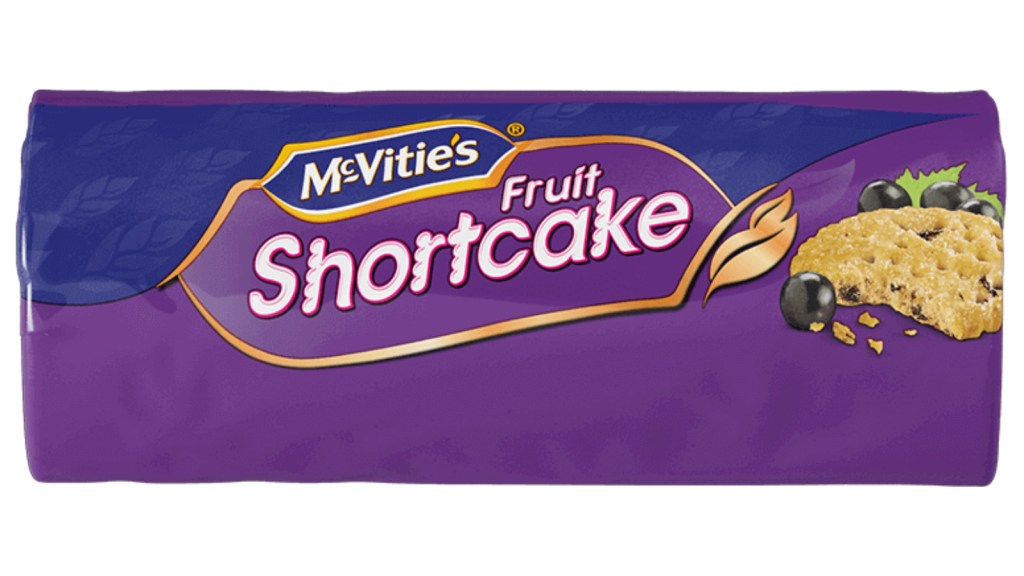
The Fruit Shortcake is a biscuit that means business. This hearty snack is packed with currants and has a satisfyingly crunchy texture. It’s been a popular choice for generations, especially among those who prefer their biscuits with a bit more substance. The Fruit Shortcake’s robust nature makes it an excellent choice for dunking in tea or coffee.
Chocolate Finger
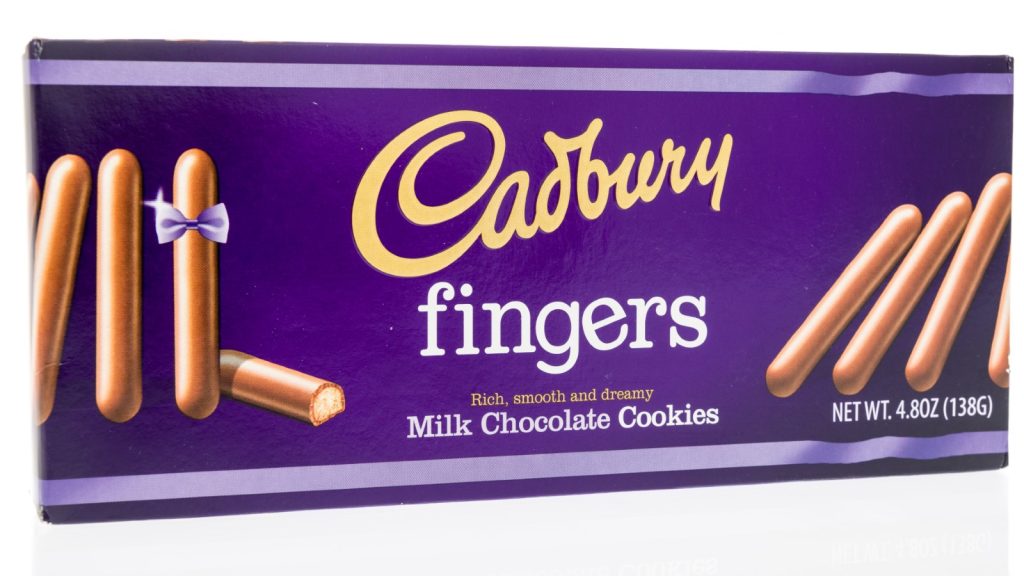
The Chocolate Finger is the ultimate indulgence in bite-sized form. This slim biscuit stick, fully coated in milk chocolate, has been tempting British taste buds since the 1950s. Its small size makes it all too easy to eat ‘just one more’, leading to many an empty packet at teatime.
Jaffa Cake
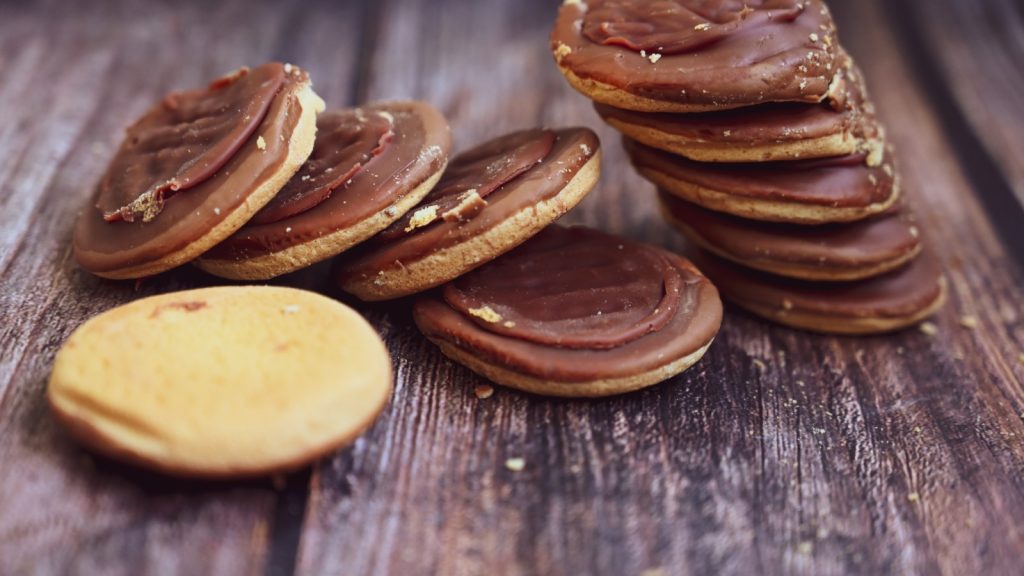
The Jaffa Cake sparks heated debates across Britain – is it a cake or a biscuit? This circular treat consists of a sponge base, orange-flavoured jelly, and a coating of chocolate. Despite its name, it was officially classified as a cake in a famous 1991 tax tribunal. Regardless of its classification, the Jaffa Cake remains a beloved snack that confuses and delights in equal measure.
Tunnock’s Teacake
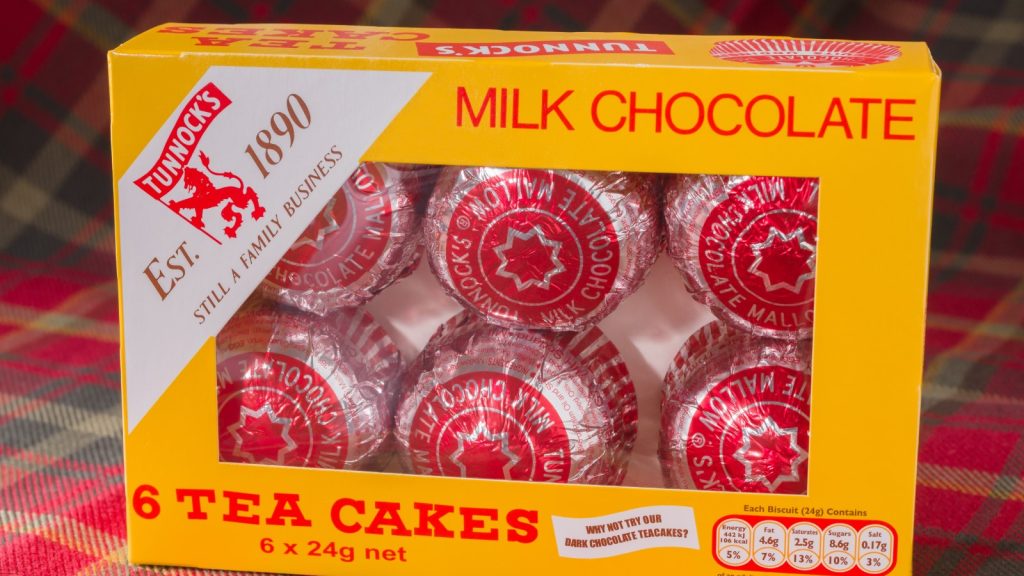
The Tunnock’s Teacake is a Scottish delicacy that’s won hearts across Britain. This dome-shaped treat consists of a biscuit base topped with marshmallow and coated in chocolate. Created in 1956, the Teacake has become an iconic symbol of Scottish confectionery. Its unique texture and rich flavour make it a favourite for special occasions and everyday indulgence alike.
Viennese Whirl
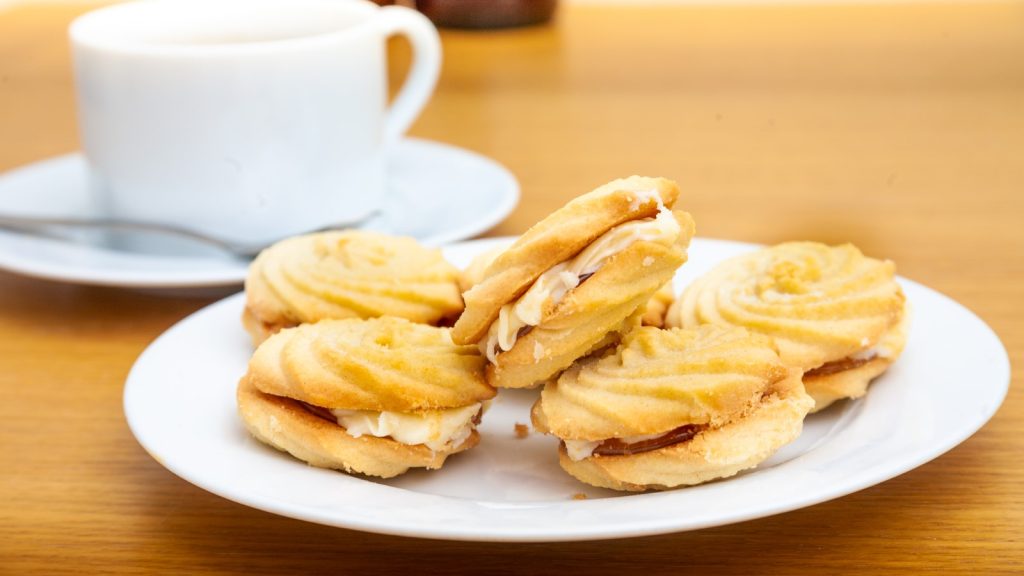
The Viennese Whirl is a biscuit that looks as good as it tastes. This buttery shortbread sandwich with a jam and buttercream filling is a more recent addition to the British biscuit canon, but it’s quickly become a favourite. Its swirled design and rich, crumbly texture make it feel like a real treat, perfect for when you want to add a touch of luxury to your tea break.
Iced Gem
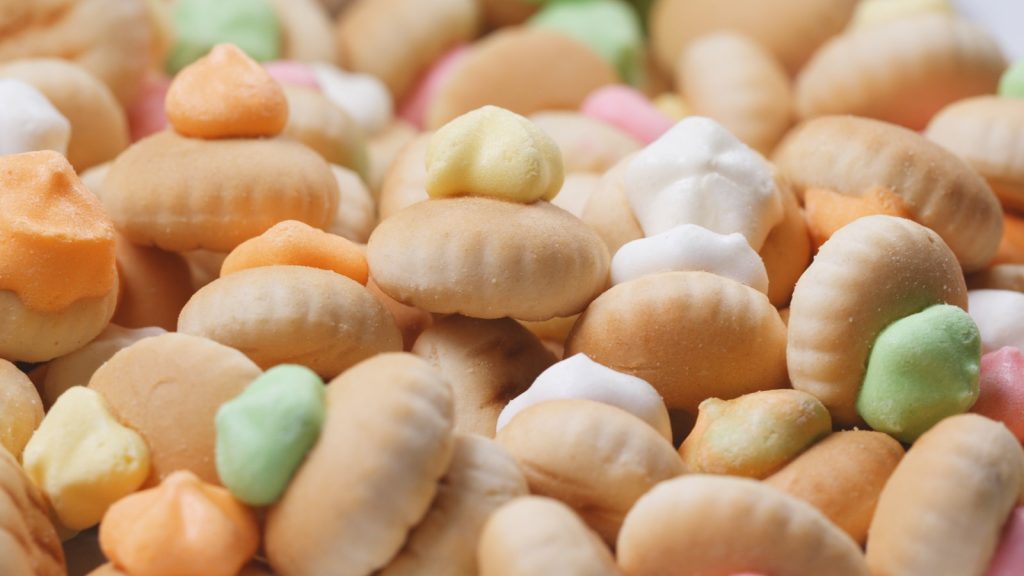
The Iced Gem is a tiny biscuit with a big personality. This miniature treat consists of a small biscuit base topped with a colourful blob of hard icing. Popular since the 1850s, Iced Gems are often associated with childhood parties and picnics. Their small size and bright colours make them irresistible to kids and nostalgic adults alike.
Party Ring
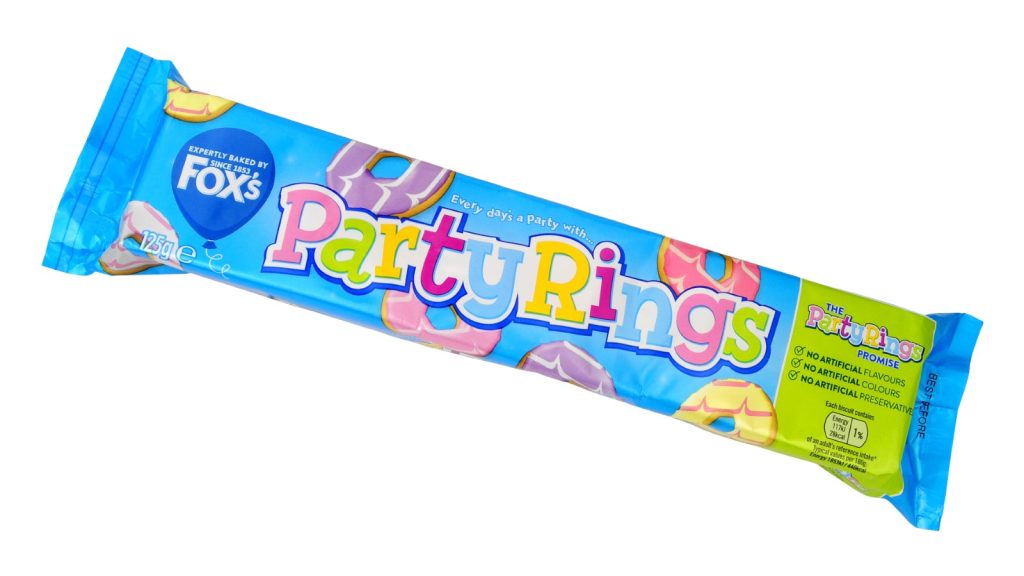
The Party Ring is the life and soul of any biscuit tin. This circular biscuit with its vibrant iced patterns has been brightening up children’s parties since the 1980s. Despite its playful appearance, the Party Ring has a surprisingly complex flavour, with a hint of lemon in the icing that complements the sweet biscuit base.
Fig Roll
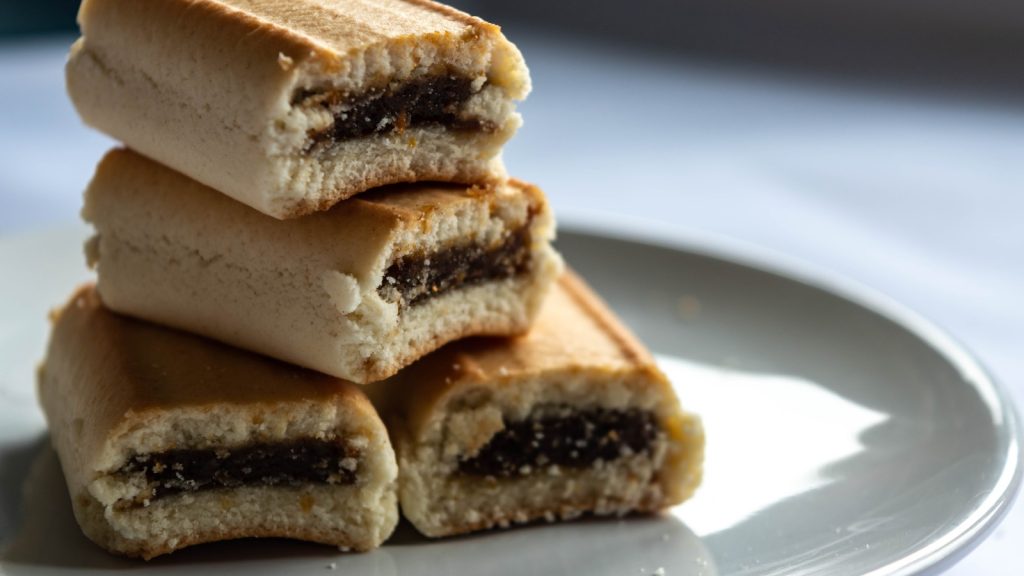
The Fig Roll is a biscuit that divides opinion. This log-shaped biscuit filled with fig paste has been a part of British teatime since the late 19th century. Originally developed as a way to preserve figs, the Fig Roll has endured as a favourite among those who appreciate its unique texture and flavour.
Lincoln
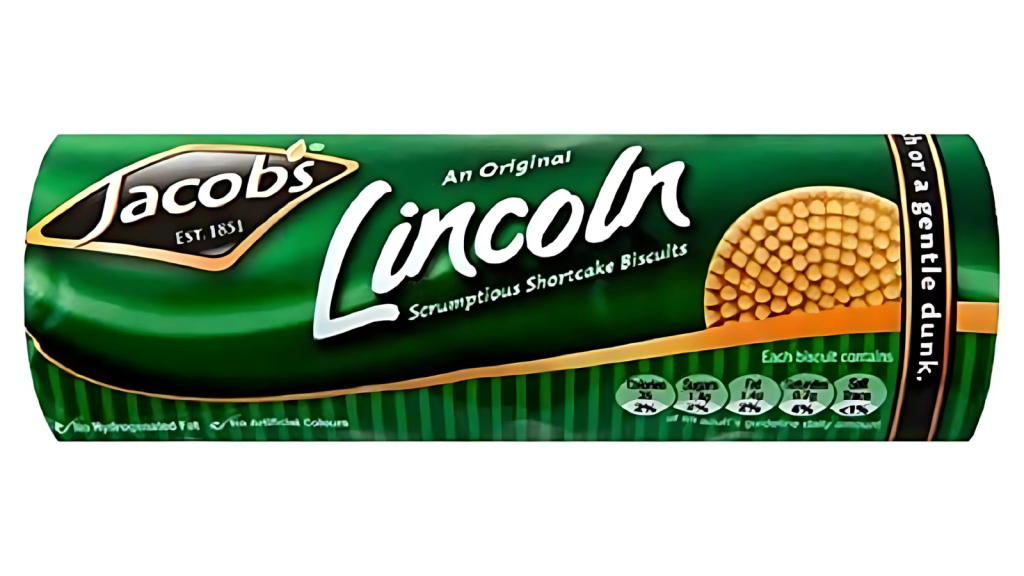
The Lincoln biscuit is a hidden gem in the world of British biscuits. This oval-shaped shortbread biscuit, with its distinctive dotted pattern, has been around since the 19th century. Named after the city of Lincoln, this biscuit is loved for its buttery flavour and satisfying crunch.
Abbey Crunch
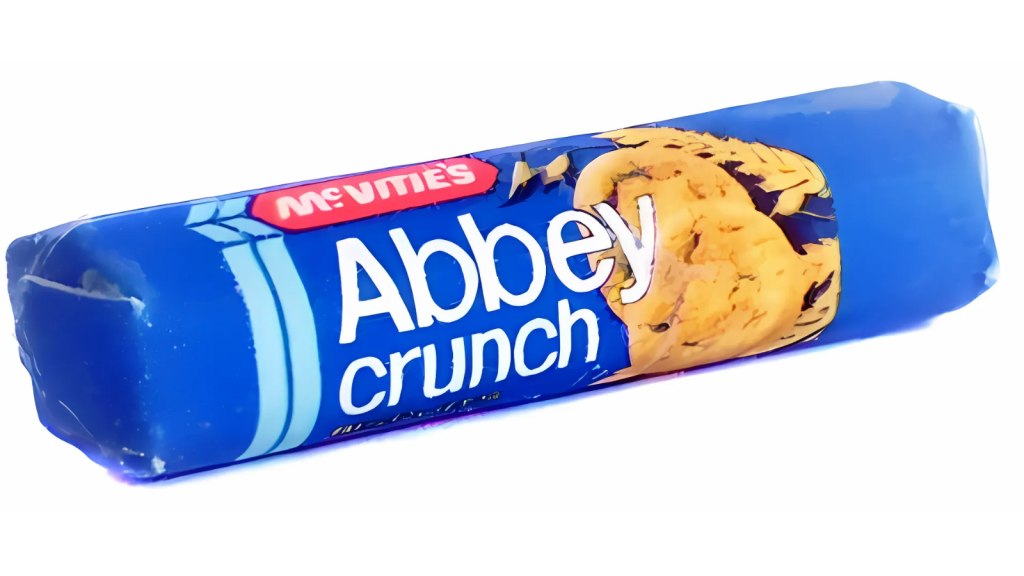
The Abbey Crunch is a biscuit that’s sadly no longer in production, but it holds a special place in British biscuit history. This oat-based biscuit with its distinctive crunch was a favourite from the 1980s until its discontinuation in 2009. Its unique texture and wholesome flavour made it a popular choice for those seeking a slightly healthier biscuit option.
Katy Willis is a writer, master herbalist, master gardener, and certified canine nutritionist who has been writing since 2002. She’s finds joy in learning new and interesting things, and finds history, science, and nature endlessly fascinating.
